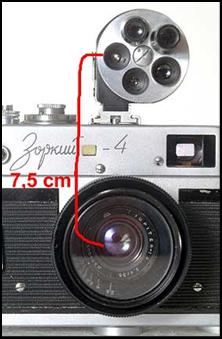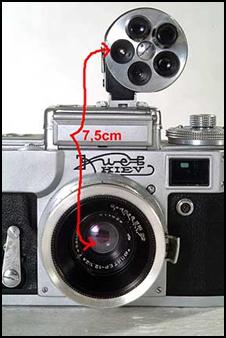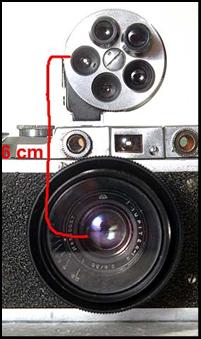
|
Prime Objectives page 2 |
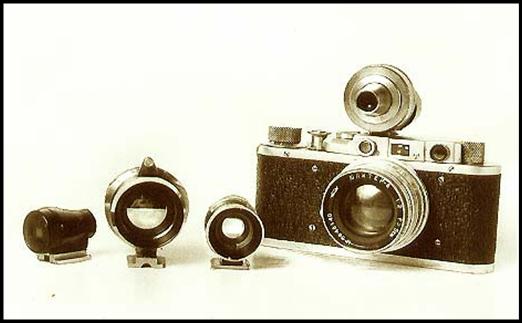
|
Using non-standard lenses require the use of accessory viewfinders for correct image field viewing. The camera’s VF only shows the field for 50mm lenses. |
|
Viewfinders which really work: single view Russian 85mm finder; Sandmar 35-135 mirror finder (originally on an Argus); Japanese 35/50 brightline finder (best working so far); and a Canon multifinder (Leitz Imarect copy). The Imarect type finders work best with the low-profile FED / Zorki cameras.
The Russian Turret Finder doesn’t score high in my list for two reasons. The one I have is plagued with parallax, when used on a Zorki or FED and can be used only at the 28/35 settings. It might be that I got a bad one, but testing a similar finder belonging to a friend brought the same results. And even if it gave correct views, its physical dimensions would not make it the best finder to be found on a low profile FED or Zorki. The thing wouldn’t even fit fully on the camera’s shoe– a bit of its foot remained out, and its large protruding rear did not allow easy focusing through the camera’s eyepiece. It’s a real headache- literally, since it’s an oddly shaped metal hunk pushing against one’s forehead in use. This finder is better used with other, taller FED or Zorki models (like the Zorki-4 or FED 5., or the Kiev, since it (the finder) was derived from a Zeiss Contax finder. The only adaptation which the makers did was to flip the optics to one side to allow access to the shutter dial
The Single Focal Length Finder for the 8,5 cm. This tiny plastic finder works better for the FED/Zorki than the turret finder. It doesn’t get in the way, as the turret finder would. And despite the lack of parallax controls, it does more accurate viewing than the turret finder for low-profile cameras..
Apparently not. The turret finder apparently was introduced at a time when FED and Zorki and Kiev had become taller. The finder appears to be parallax-calibrated for taller cameras. The only time when the turret finder really worked for me was when I used it for the taller Zorki-4, FED-5, or Kiev-4 cameras. It is curious to note that all these cameras are almost of the same height, with their accessory shoes placed at almost the same distances from the central point of the lens.
HOWEVER, when used on a taller camera, the finder gives fairly accurate viewing. The taller cameras also allow keep the turret finder’s large butt out of the eye when focusing through the camera’s RF. The Zorki-4, FED-5, and Kiev-4 place the finder’s viewing lens at about 7,5 cm from the centre of the lens. On a shorter Zorki or FED, this distance is only about 6 cm. The 1,5 cm difference is really significant, when one considers that the parallax positions are calibrated in millimeters or fractions of millimeters.
Zorki-4 and Kiev-4 place the finder’s lens at about 7,5 cm from the camera lens’ centre. The shorter FED has it at 6 cm.
|
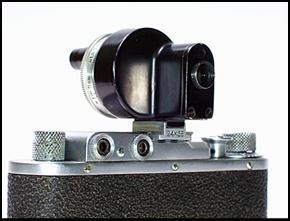
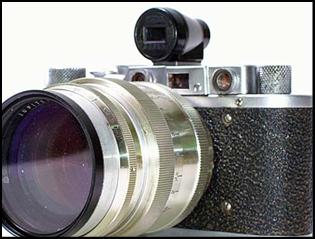
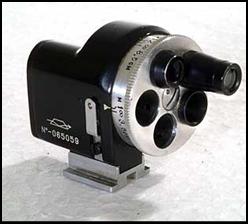
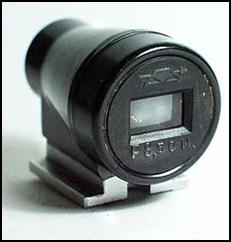
|
? |
|
WERE THE TURRET FINDER AND THE FED MEANT FOR EACH OTHER? |
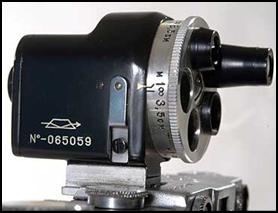
|
The triangular index mark on the turret finder is used both to position the finder to give the view for the lens in use, as well as to correct its view for parallax. The ability of a finder to give an accurate view depends on its placement relative to the lens. Its view will only coincide with the lens if it is positioned right. Finders are calibrated with a given position it will have on the camera relative to the lens. The accuracy of a finder therefore would depend on how far or how close it sits from the lens. When used on shorter-profiled FED and Zorki, the turret finder often gives inaccurate views with the 135mm, 85mm, and 50mm lenses. Only the 35mm and 28mm settings give accurate viewing. This maybe due partly to the fact that wider angle lenses tend to be more forgiving to parallax. |
